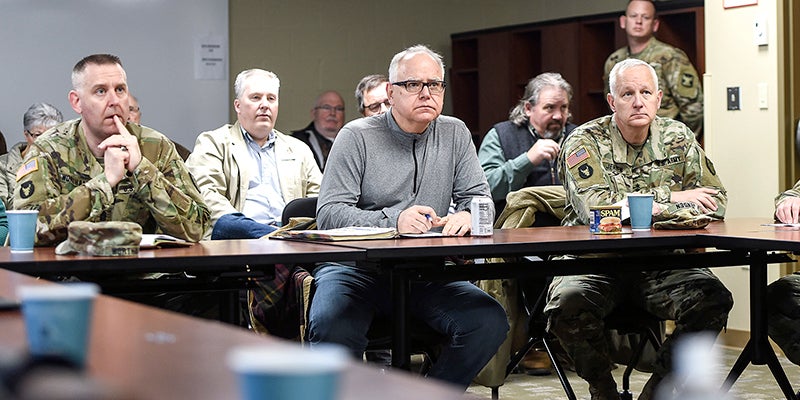Walz: Minnesota will offer mail-in saliva tests for virus
Published 9:19 am Wednesday, October 14, 2020

- Gov. Tim Walz. Herald file photo
|
Getting your Trinity Audio player ready...
|
MINNEAPOLIS (AP) — Minnesota will expand its offering of saliva tests for the coronavirus into a statewide mail-in program that will be available free to all residents, Gov. Tim Walz announced Tuesday.
The state opened a semi-permanent saliva testing site in Duluth three weeks ago that has already conducted about 8,000 tests. It will open others starting Wednesday in Winona, in Moorhead on Oct. 17 and in Brooklyn Park on Oct. 20. The Minnesota Department of Health plans to add six more later this month — four in the Twin Cities metro area and two in greater Minnesota.
But the state also plans to expand that strategy into a statewide program that, when fully implemented, would let any Minnesotan get tested without leaving home, Walz said in a briefing for reporters.
Minnesota health officials are nervously keeping an eye on neighboring states, which have some of the highest per-capita infection rates in the country.
While Minnesota isn’t doing as poorly, officials warn that the virus is still spreading quickly in Minnesota and that the state can’t afford to let down its guard.
“We want to cut off that community spread by making sure that people get tested as easily, and as quickly and as close to their home as they possibly can,” Walz said. “The longer it takes for us to find out if somebody has this, the more they unknowingly spread it.”
People who request the saliva tests would send their samples via UPS to a lab that the state will open soon in Oakdale that’s projected to eventually double the state’s testing capacity to 60,000 per day. The specific saliva test that the state is using is very nearly as accurate as the nasal swab diagnostic tests now in common use, but without the discomfort, Health Commissioner Jan Malcolm said.
Both tests check for whether someone currently is infected with the coronavirus, as opposed to antibody tests that check for whether someone was previously infected and might have developed some immunity.
While the testing sites will ask residents for their insurance information and bill their carriers, nobody who is uninsured or underinsured will have to pay, said Dan Huff, the state’s assistant health commissioner for protection. He didn’t have a figure for how much the program will cost the state.
The state will start by piloting mail-in testing for faculty and staff at K-12 public schools and in the University of Minnesota and Minnesota State college and university systems, Huff said. He couldn’t give a date for when the tests will become available to everyone, but said the goal is sometime in November.





